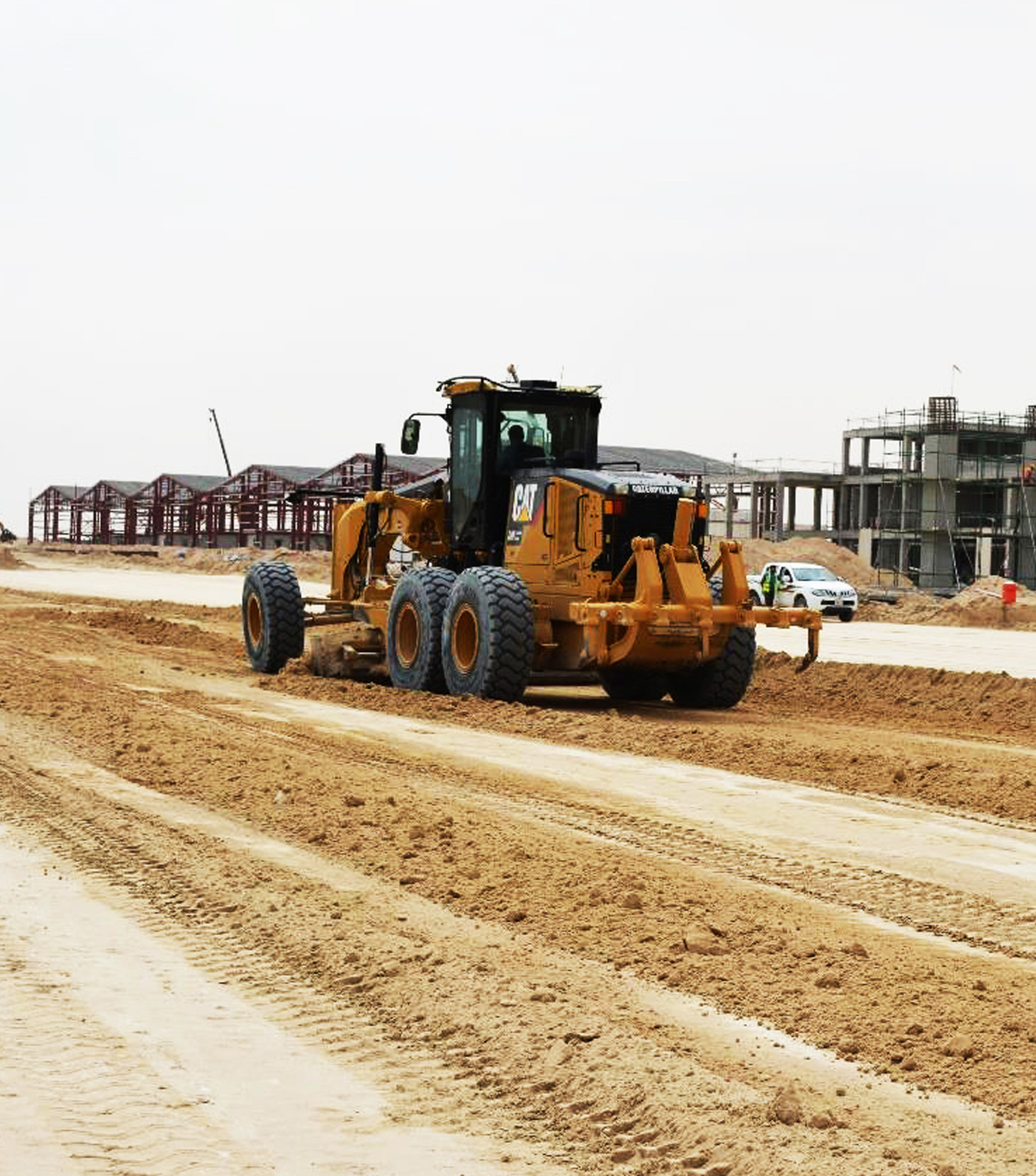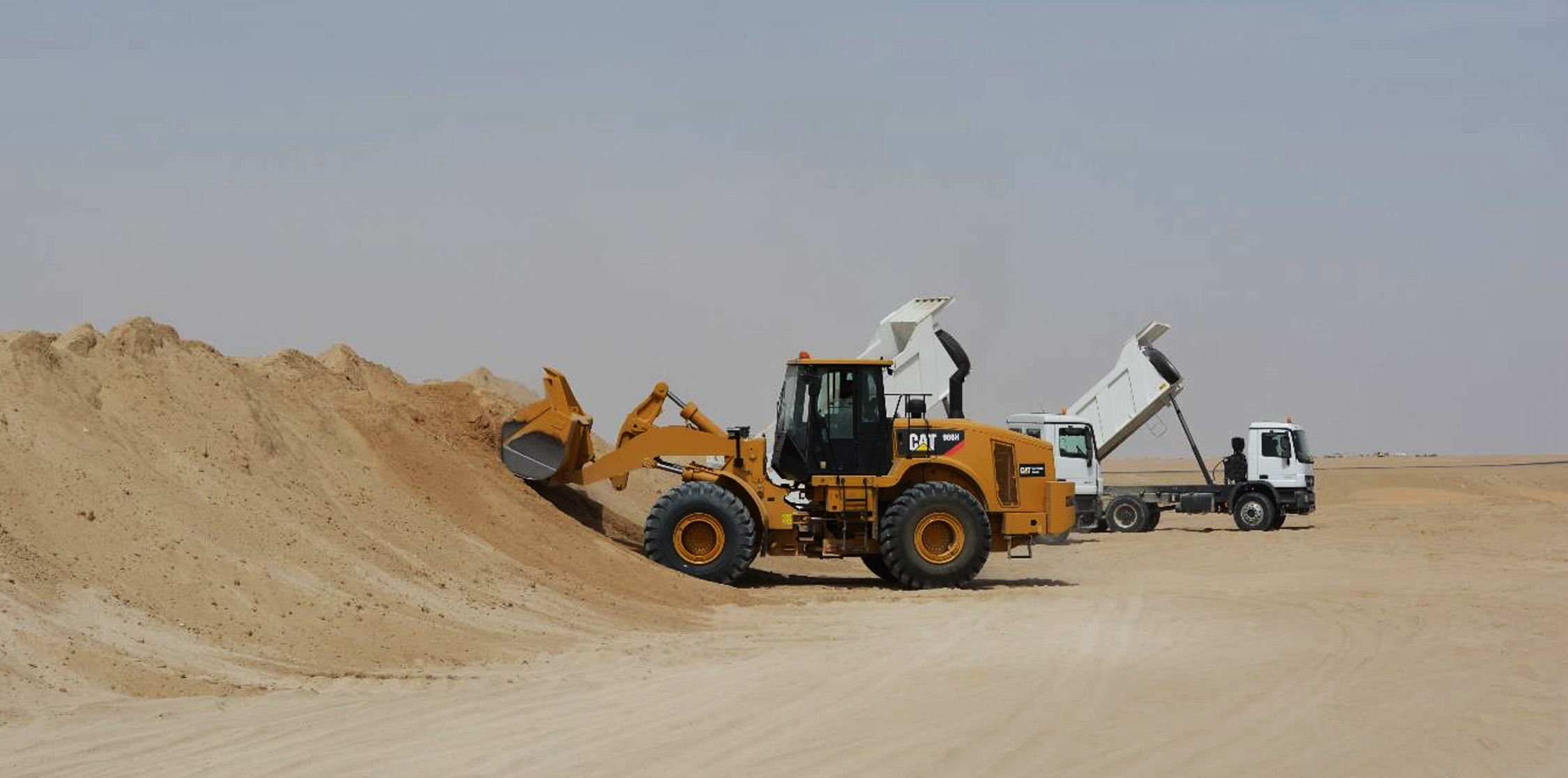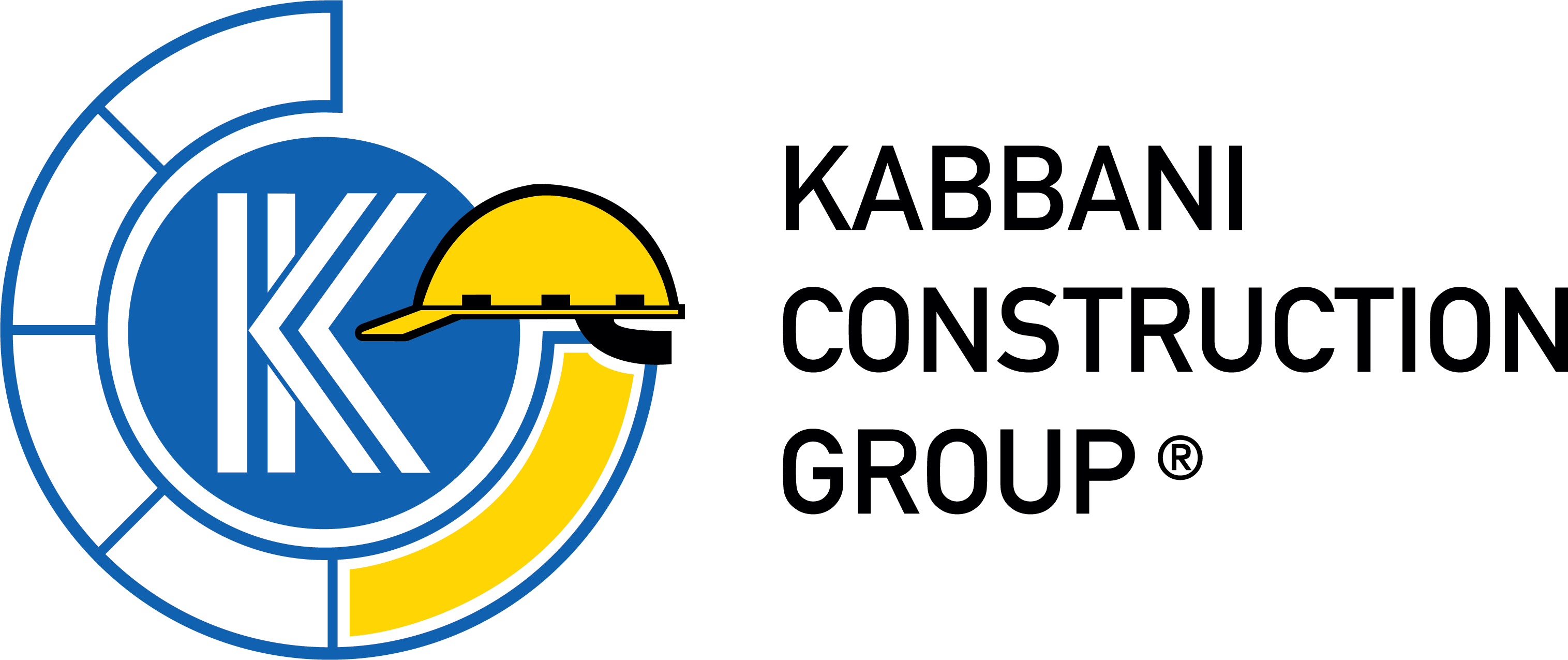Backfilling & Excavation
Earthwork in excavation and backfilling of soil upto required depth is required for construction of foundation and trenches. The proper sequence of excavation and backfilling is required to optimise the process and prevent safety issues.
Different soil layers may be encountered while excavation, dewatering may be needed sometimes. These points must be kept in mind to take necessary action during excavation and backfilling. Correct measurement of excavation and backfilling is required because excavation cost is major part of the foundation construction.

- Hydraulic Excavator
- Tractor / Trucks
- Spade
- Kassi
- Pickaxe
- Crowbar
- Rammer
- Wedge
- Boning Rod
- Sledge Hammer
- Basket
- Iron Pan
- Line and Pins
- Hydraulic Compactor
- Setting out of corner benchmarks.
- Survey for ground levels.
- Survey for top levels
- Excavation to approved depth.
- Dressing of loose soil.
- Making up to cut off level
- Constructing dewatering wells and interconnecting trenches.
- Marking boundaries of the building.
- Constructing protection bunds and drains

Techniques Used for Backfilling
Compacting in Trenches
This technique involves some mechanical means such as a compactor on an excavator or a “jumping jack”-type compactor. Compact soils to not less than the percentages of maximum dry density as determined in accordance with ASTM D698, Method A (Standard Proctor). The soil lift will depend upon the nature of the backfill, and the compaction equipment to be used. Water may be added during the compaction process, to assist with compaction. The following steps are recommended:
- Backfill in layers of 4″-6″ (non-organic fill and clean of debris)
- Compact with a 1,000 lb. compactor
- Water thoroughly
- Repeat first three steps
Water Jetting
Water jetting is a technique that relies on specific material but no compaction. Backfilling with jets allows the contractor to leave the trench and come back later forcing pressurized water into the trench using a long metal device. Water jetting should be avoided on plastic soils or heavy clay soils, however, it is recommended in sand or in highly fissured bedrock. In jetting, you pump the water under pressure and use the force of the jetted water to move the bedding or backfill material around.
As with any backfilling, the material should be placed slowly and in lifts. Flooding or ‘jetting’ backfill generally produces poor to very poor compaction. It is necessary to take preventive measures to contain water containing sediment, and in particular, prevent it from entering drains and watercourses, all in accordance with EPA Guidelines. If the water cannot drain from the backfill soils, the material will be set up for future collapse.
Flowable Fill
Backfill can also be done using flowable fill, a cementitious material with a low water/cement ratio, delivered to the job site by a ready-mix truck. The material is then placed as backfill directly from the truck, just like regular concrete. Backfilling with flowable fill should be done carefully, making sure that the utility pipe is covered first with an aggregate material. Allowing flowable fill to engulf the pipe can create problems for those needing to hand dig around the pipe in the future.
The other challenge when using flowable fill is that the material does flow so the contractor must block or prevent the backfill material to flow continuously to other trench areas.
Utility Trenches
Follow these steps when backfilling utility trenches:
- Backfill trenches and excavations immediately after the pipe is laid, unless other protection is directed or indicated.
- Select and deposit backfill materials with special reference to the future safety of the pipes.
- In the lower portion of the trench, deposit approved backfill and bedding material in layers of 6″ maximum thickness, and compact with suitable tampers to the density of the adjacent soil until there is a cover of not less than 12″ using special care not to damage pipe and pipe coatings.
- Except for special materials for pavements, backfill the remainder of the trench with material free from stones larger than 6″ or ½ the layered thickness, whichever is smaller, in any dimension.
- Under roads, streets, and other paved areas.
Mechanically tamp in 6″ layers using heavy duty pneumatic tampers or equal. Tamp each layer to a density equivalent of not less than 100% of an ASTM D698 Proctor Curve. Provide additional compaction by leaving the backfilled trenches open to traffic while maintaining the surface with crushed stone.


